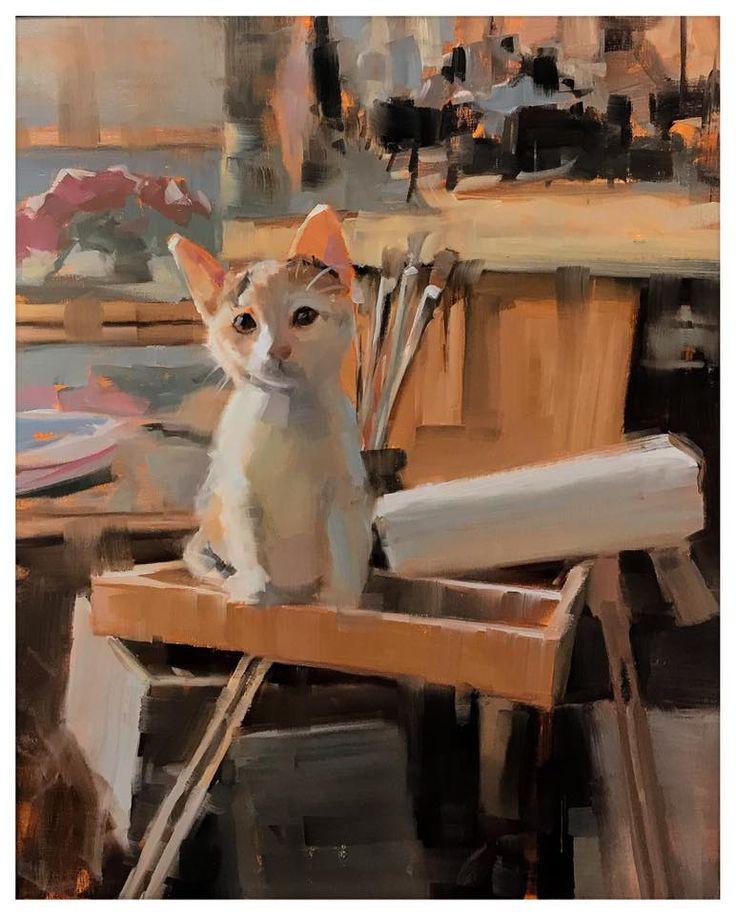Do You Face A Challenge: Painting a Cat in Watercolor

For those who tread the rewarding path of painting, one universal truth stands unchallenged: no two subjects are the same, each posing its unique set of challenges and rewards. Today, we turn our easels towards a subject as enigmatic as it is beloved – the cat. This creature of grace, mystery, and expressive agility can be a demanding model for the watercolor artist. Capturing the essence of a cat is no easy feat, but the path can be made smoother with the right techniques, tips, and skills.
Challenges of Painting a Cat in Watercolor
Cats, with their vibrant eyes, graceful movements, and fur coats of a myriad of shades and patterns, are a delight to paint but come with their unique set of challenges.
1. Expressive Eyes
Cats' eyes are a highlight of their personality and demeanor. They can display a range of emotions from playfulness to serenity, and capturing this in watercolor can be complex.
2. Fur Texture
Painting fur in watercolor is inherently challenging because of its soft, delicate, and detailed nature. Cats come in a variety of fur lengths and patterns, which adds another layer of complexity.

3. Fluid Movements
Cats are renowned for their agile and flexible movements. Illustrating these dynamics in a static medium like watercolor can be a formidable task.
Image Credit: Amazrock Brands ArtTutorial - How to draw a cat easily with Amazrock Watercolor Pencils
Techniques for Painting a Cat in
Watercolor
To conquer these challenges, you need to adopt a few critical techniques.
1. Mastering Wet-on-Dry and Wet-onWet Techniques:
The use of both these techniques can help achieve a realistic portrayal of a cat. Wet-on-dry can be used for creating fur texture and detailing, while wet-on-wet is perfect for creating the soft, smooth blending of colors in the fur and the background.
2. Layering
Layering is an integral part of creating depth and volume in your painting, especially when you are dealing with the soft texture of a cat's fur. Start with a light wash for the undercoat, gradually adding layers as they dry, which gives the fur a fuller, more realistic look.
3. Lifting Technique
This technique involves removing some paint after it has been applied to lighten the area. It's particularly useful for creating highlights in the fur and the glint in the eyes.
Tips and Skills Required
While techniques guide the application, there are a few tips and skills that can improve the overall process and outcome.
1. Practice Sketching
Cats have a unique body structure that is crucial to capture for a realistic portrayal. Regular practice in sketching cats can help you become familiar with their anatomy and movements.
2. Study the Fur
Observation is key in painting. Study your cat model's fur closely, notice how the colors change with the light, and how the patterns emerge, and try to incorporate these details into your painting.
3. Use High-Quality Materials
Invest in good quality brushes that can handle the precision required for painting fur and eyes. High-quality watercolor paper and paints will also make a difference in color representation and durability.
4. Patience is Key
Watercolor painting is a dance with patience. Take your time with each layer, allowing it to dry fully before adding another. This is crucial to avoid colors bleeding into each other, especially when painting detailed patterns.
The art of painting a cat in watercolor is a rewarding endeavor that bridges the worlds of observation, understanding, and creativity. With time and practice, the enigmatic allure of our feline friends can come to life on paper, and the journey to this end is as fulfilling as the artwork itself.
 Image Credit: Amazrock Brands Art Watercolor Tutorial
Image Credit: Amazrock Brands Art Watercolor Tutorial



 Image Credit: Amazrock Brands Art Watercolor Tutorial
Image Credit: Amazrock Brands Art Watercolor Tutorial
